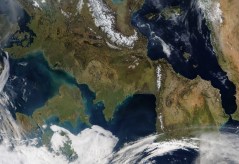The Role of Espionage in Cold War History: Spies and Secrets Revealed
The Cold War was not just a battle of ideologies between the United States and the Soviet Union; it was also a thrilling game of espionage that shaped the course of history. Spies, secret missions, and intelligence operations played crucial roles in both countries’ strategies. This article will explore how espionage influenced key events during the Cold War, revealing some intriguing secrets along the way.
The Birth of Modern Espionage
Espionage as we know it today began to evolve in the early 20th century but reached new heights during the Cold War (1947-1991). The rivalry between superpowers led to a surge in intelligence efforts. Organizations such as the CIA (Central Intelligence Agency) in the U.S. and KGB (Committee for State Security) in the USSR became pivotal, employing various methods to gather information about each other’s military capabilities, nuclear arsenals, and political intentions.
Notable Spies Who Changed History
Several spies left remarkable marks on Cold War history. One of the most infamous was Aldrich Ames, a CIA officer who turned traitor by leaking valuable information to Russia. His actions resulted in significant losses for U.S. intelligence operations and even cost lives. On the opposite side, Kim Philby, a British intelligence officer who spied for the Soviets, played an instrumental role in undermining Western efforts against communism.
Innovations in Intelligence Technology
Espionage during this period witnessed groundbreaking technological advancements that transformed how information was gathered. The development of satellites like CORONA allowed nations to conduct reconnaissance from space without entering enemy territory physically. Additionally, techniques such as wiretapping and cryptography became essential tools for spying agencies aiming to intercept communications or decode messages.
Espionage Operations That Shocked Nations
Numerous espionage operations marked significant moments during the Cold War. Operation Mongoose aimed at destabilizing Fidel Castro’s regime in Cuba through sabotage and psychological warfare; meanwhile, Operation CHAOS sought to monitor anti-war activists within America itself—a testament to how deep espionage penetrated society’s fabric during this tense era.
Legacy of Espionage After the Cold War
Although officially over since 1991 with nothing resembling peace definitively established between former rivals like Russia and America today—the legacy remains impactful across multiple fronts: from ongoing surveillance practices worldwide fueled by past techniques learned through Cold war experiences down through popular culture where tales about spies captivate audiences still fascinated by those shadows lurking behind geopolitical maneuvers.
In conclusion, espionage has always been an integral part of international relations—especially evident throughout Cold War history with its many twists involving remarkable figures operating behind curtains cloaked secrecy. Understanding these elements helps us appreciate both historical context while acknowledging their lasting influence on contemporary geopolitics.
This text was generated using a large language model, and select text has been reviewed and moderated for purposes such as readability.






